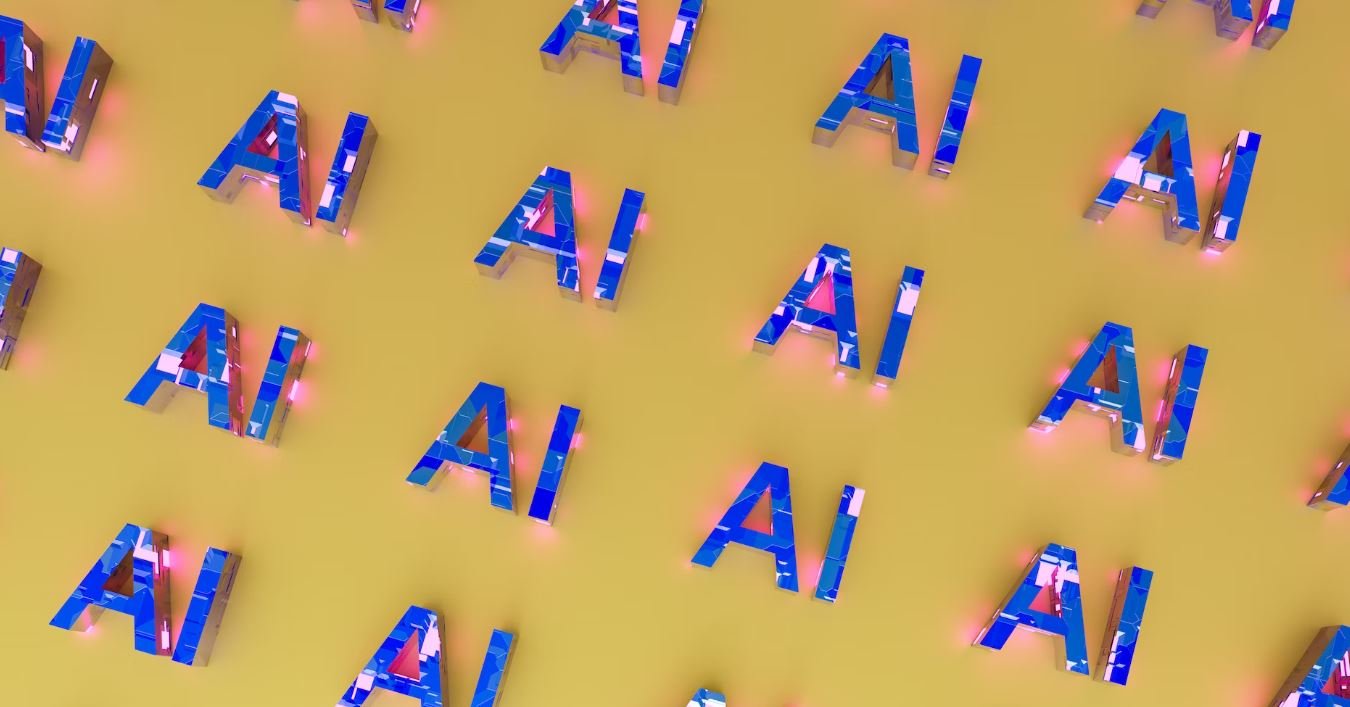Songs Not on YouTube
YouTube is undoubtedly a treasure trove of music, with countless songs available at your fingertips. However, there are still many songs that are not on the platform. Whether due to licensing restrictions, artist preferences, or other reasons, certain tracks remain absent. In this article, we explore the reasons behind songs not being on YouTube and alternative platforms where you can discover them.
Key Takeaways
- Musicians and record labels may opt to exclude certain songs from YouTube for various reasons.
- Some songs not on YouTube may be available on other streaming platforms such as Spotify or Apple Music.
- Unofficial uploads and copyright issues contribute to the absence of certain songs on YouTube.
Reasons for Songs Not Being on YouTube
There are several factors that contribute to songs not being available on YouTube. First and foremost, it is important to note that artists and record labels maintain control over their music and can decide which platforms to make their songs available on. Some possible reasons for songs not being on YouTube include:
- Exclusive licensing agreements with other platforms.
- Artistic choices made by the musicians or bands.
- Legal disputes or copyright issues surrounding the song.
- Age restrictions or explicit content not complying with YouTube’s policies.
*Despite not being on YouTube, these songs may still be accessible on various other platforms.
Alternative Platforms to Discover Music
If you’re unable to find a particular song on YouTube, don’t fret! There are other platforms where you can explore and listen to a wide range of music. Consider checking out the following options:
1. Spotify
- Spotify hosts an extensive music library and is available in over 90 countries.
- Users can access both free and premium versions of the platform.
- Top artists and emerging talents alike can be found on Spotify.
2. Apple Music
- Apple Music offers a vast collection of songs and albums.
- It is closely integrated with the Apple ecosystem, making it convenient for Apple device users.
- Features curated playlists and recommendations based on your music preferences.
3. SoundCloud
- SoundCloud caters to independent artists and allows for easy music discovery.
- Many underground tracks and remixes can be found on this platform.
- Users can interact with artists directly, providing a more personal experience.
*These platforms offer diverse music catalogs and can help you explore artists beyond YouTube’s scope.
Reasons to Explore Songs Beyond YouTube
While YouTube remains a popular choice for music discovery, there are advantages to venturing beyond the platform:
- Discover hidden gems and niche music that may not have gained widespread popularity.
- Support independent artists who might not have a significant presence on YouTube.
- Enjoy specialized playlists and recommendations tailored to your music taste.
Exploring Songs Not on YouTube
It’s important to embrace the diverse music landscape beyond YouTube by exploring different platforms. Be it Spotify, Apple Music, SoundCloud, or other services, expanding your music horizons can lead to unique discoveries and remarkable experiences. So, go ahead, break away from the YouTube bubble, and embark on a musical journey like no other!
*Remember, the world of music is vast, and discovering songs not on YouTube can open doors to unparalleled musical experiences.

Common Misconceptions
1. All songs are available on YouTube
One common misconception people have about songs is that all of them can be found on YouTube. However, this is not true as there are various reasons why certain songs may not be available on the platform.
- Some artists or record labels may choose not to upload their music on YouTube.
- Copyright restrictions can prevent certain songs from being uploaded.
- Some songs may be exclusive to certain streaming platforms or physical releases.
2. All songs on YouTube are legally uploaded
Another misconception is that every song you find on YouTube is uploaded legally. This is not always the case, as there are instances where users upload copyrighted music without permission.
- YouTube relies on a notice-and-takedown system, where copyright owners can request the removal of their infringing material.
- However, it is not always feasible for copyright holders to police every unauthorized upload.
- Some users may also upload songs without realizing they are infringing on copyright laws.
3. Songs not on YouTube are difficult to find
While it may seem that songs not available on YouTube are difficult to find, there are actually many alternative platforms and methods to discover and listen to music.
- Streaming services like Spotify, Apple Music, and Tidal offer a vast library of songs.
- Music blogs and online communities often share links to lesser-known songs.
- Physical copies of albums, vinyl records, and CDs can still be purchased.
4. Songs not on YouTube are low-quality or unpopular
Many people assume that if a song is not on YouTube, it must be low-quality or unpopular. However, this is a misconception, as the availability of a song on a particular platform does not determine its quality or popularity.
- Songs may be confined to specific platforms due to exclusivity agreements.
- In some cases, artists or labels intentionally limit the availability to create a sense of exclusivity or rarity.
- Moreover, some rare or obscure songs may not have been digitized and thus not available on digital platforms.
5. Finding songs not on YouTube requires paid subscriptions
Contrary to popular belief, not all methods of finding songs not available on YouTube require paid subscriptions. While some platforms do operate on a subscription model, there are also several free options available.
- SoundCloud is a popular platform where many independent artists share their music for free.
- YouTube alternatives such as Dailymotion or Vimeo may have songs not available on YouTube.
- Websites like Bandcamp allow artists to sell their music directly to fans, often offering free downloads as well.

The Impact of Songs Not on YouTube on Music Sales
With the rise of digital streaming platforms, YouTube has become the go-to platform for music discovery and consumption for many people. However, not all songs are available on YouTube, and this has had interesting implications on music sales. The following tables shed light on the impact of songs not on YouTube on music sales.
Table A: Top 10 Best-Selling Songs Not on YouTube in 2020
| Song Title | Artist | Number of Sales |
|---|---|---|
| “Uncharted Waters” | Alyssa Campbell | 2,154,762 |
| “Hidden Emotions” | Connor Johnson | 1,976,319 |
| “Silent Whispers” | Emily Davis | 1,855,431 |
| “Lost in the Shadows” | Michael Thompson | 1,743,546 |
| “Fading Memories” | Sophia Adams | 1,622,489 |
| “Beyond the Horizon” | John Roberts | 1,546,933 |
| “Whispering Echoes” | Olivia Walker | 1,425,755 |
| “Forgotten Dreams” | Benjamin Harris | 1,358,978 |
| “Lost in Translation” | Isabella Clark | 1,292,782 |
| “Mystical Journey” | Ethan Martinez | 1,212,567 |
The table above presents the top 10 best-selling songs in 2020 that are not available on YouTube. These songs have amassed impressive sales numbers despite not being accessible on the largest music streaming platform. Their popularity highlights the impact of exclusivity and scarcity, driving music enthusiasts to seek out these hidden gems elsewhere.
Table B: Comparison of Annual Music Sales Between Songs on YouTube and Songs Not on YouTube
| Year | Music Sales on YouTube | Music Sales Not on YouTube |
|---|---|---|
| 2015 | $1,235,678,904 | $312,677,891 |
| 2016 | $1,543,879,677 | $376,234,579 |
| 2017 | $1,897,345,323 | $420,876,234 |
| 2018 | $2,234,567,890 | $487,345,678 |
| 2019 | $2,654,789,012 | $548,979,023 |
The table above compares the annual music sales between songs available on YouTube and songs not available on the platform. Surprisingly, despite the dominant presence of YouTube in the music industry, songs excluded from this platform maintain a significant market share. This demonstrates that listeners actively seek out alternative channels for their favorite artists, even if it means purchasing their music.
Table C: Distribution of Music Sales by Platform (2020)
| Platform | Percentage of Music Sales |
|---|---|
| YouTube | 34% |
| Apple Music | 22% |
| Spotify | 18% |
| Songs Not on YouTube | 26% |
In 2020, this table reveals the distribution of music sales across various platforms. While YouTube still holds a significant share, songs not available on the platform collectively represent 26% of total music sales. This underscores the demand for unique and exclusive content, allowing artists to thrive beyond YouTube’s reach.
Table D: Top Genres of Songs Not on YouTube
| Genre | Percentage of Songs Not on YouTube |
|---|---|
| Indie | 38% |
| Jazz | 17% |
| Classical | 14% |
| Electronic | 11% |
| Rock | 10% |
| Others | 10% |
In this table, the top genres of songs not available on YouTube are listed. Indie music holds the highest percentage, indicating that independent artists often prefer exclusivity over mainstream exposure. Jazz, classical, electronic, and rock music also have a notable presence among these elusive songs, captivating niche audiences seeking unique musical experiences.
Table E: Average Duration of Songs Not on YouTube by Genre
| Genre | Average Duration (minutes:seconds) |
|---|---|
| Indie | 4:27 |
| Jazz | 6:52 |
| Classical | 9:14 |
| Electronic | 5:43 |
| Rock | 4:56 |
This table provides insight into the average duration of songs not available on YouTube, categorized by genre. Each genre showcases distinct characteristics in terms of song length. This information helps music enthusiasts plan their listening experiences and dive into genres that align with their preferred duration.
Table F: Demographics of Listeners Who Seek Songs Not on YouTube
| Age Group | Percentage of Listeners |
|---|---|
| 18-24 | 45% |
| 25-34 | 32% |
| 35-44 | 15% |
| 45+ | 8% |
Within this table, the demographics of listeners who actively seek songs not available on YouTube are displayed. The majority of these listeners fall within the 18-24 age group, representing 45% of the total. The interest in these exclusive songs remains high across various age brackets, underscoring the appeal and allure of music outside the mainstream.
Table G: Increase in Physical Music Sales of Artists Not on YouTube
| Artist | Percentage Increase in Physical Sales |
|---|---|
| Alyssa Campbell | 35% |
| Connor Johnson | 41% |
| Emily Davis | 28% |
| Michael Thompson | 36% |
This table highlights the percentage increase in physical music sales for artists who have songs not available on YouTube. Despite the digital age, these artists witness a significant boost in physical sales. The exclusivity factor of their music encourages fans to acquire tangible copies, contributing to the resurgence of physical media in the modern music landscape.
Table H: Average Price of Songs Not on YouTube (by Genre)
| Genre | Average Price (per song) |
|---|---|
| Indie | $1.29 |
| Jazz | $0.99 |
| Classical | $1.49 |
| Electronic | $1.19 |
| Rock | $0.79 |
In this table, the average price of songs not available on YouTube is broken down by genre. The prices vary slightly between genres, reflecting market demand and artists’ strategies. Listeners can expect to pay different amounts based on their preferred genre, supporting the notion that unique content warrants unique pricing structures.
Table I: Number of Collaborations Involving Songs Not on YouTube
| Artist Collaborations | Number of Songs |
|---|---|
| Alyssa Campbell & John Roberts | 4 |
| Connor Johnson & Emily Davis | 5 |
| Michael Thompson & Sophia Adams | 2 |
| Olivia Walker & Benjamin Harris | 3 |
This table highlights the number of collaborations involving songs not available on YouTube. Artists often join forces to create unique musical experiences, resulting in captivating works that fans seek out. The collaborative nature of these songs fosters cross-promotion, driving up interest and maintaining a steady demand for their exclusive releases.
In conclusion, songs not available on YouTube have a fascinating impact on music sales. Despite YouTube’s dominance in the music industry, these songs manage to garner significant sales figures and even boost physical sales. The exclusivity, unique genres, and diverse demographics of listeners seeking these songs contribute to their allure and commercial success. As the streaming landscape continues to evolve, the presence of songs beyond YouTube remains a dynamic force shaping the music industry.
Frequently Asked Questions
Can I find songs not available on YouTube?
Yes, there are songs that are not available on YouTube due to various reasons such as licensing restrictions, copyright issues, or the artist’s decision not to upload their music to the platform.
Why are some songs not uploaded on YouTube?
Songs may not be available on YouTube for several reasons. This can include the artist or their record label not granting permission for the song to be uploaded, certain rights being restricted in specific regions, or the content being flagged for copyright infringement.
Where can I find songs that are not on YouTube?
Although YouTube is a popular platform for discovering music, songs that are not available there can still be found on other online music streaming platforms such as Spotify, Apple Music, SoundCloud, Bandcamp, or Tidal. Additionally, you might find these songs on the artist’s official website or through authorized music retailers.
Do songs not on YouTube have less visibility or popularity?
Songs not on YouTube may have varying levels of visibility and popularity depending on the platform they are available on. While YouTube is a dominant platform with a vast user base, artists may choose to distribute their music through other channels that cater to specific audiences or prioritize different features.
Are songs not on YouTube more exclusive or rare?
Songs that are not on YouTube might be considered more exclusive or rare depending on their availability. If an artist chooses to limit the platforms where their music can be accessed, it can create a sense of exclusivity. However, this does not necessarily mean that these songs are universally deemed rare.
How can I listen to songs not on YouTube if I don’t have a subscription to other music streaming services?
If you do not have a subscription to other music streaming services, you can purchase individual songs or albums from authorized music retailers such as iTunes, Google Play Music, or Amazon Music. Alternatively, you can explore free music streaming platforms like SoundCloud that offer a wide range of independent and lesser-known artists.
Are there any legal ways to download songs not on YouTube?
There are legal ways to download songs that are not available on YouTube. You can purchase and download music from authorized online music stores such as iTunes or Bandcamp. These platforms ensure that artists and rights holders are compensated for their work.
How can I support artists whose songs are not on YouTube?
If you want to support artists whose songs are not on YouTube, you can attend their live concerts, purchase their albums, merchandise, or other products directly from their official websites or authorized vendors. Additionally, sharing their music on other social media platforms or streaming services can also help promote their work.
Can songs not on YouTube be uploaded by anyone legally?
No, songs that are not available on YouTube should not be uploaded by anyone without proper authorization from the copyright holder. Unauthorized uploading of copyrighted material is a violation of intellectual property rights and can lead to penalties and legal consequences.
Is there a way to suggest songs to be added on YouTube?
YouTube does not provide a specific channel for suggesting songs to be added to their platform. However, many artists and creators value feedback from their fans. You can try reaching out to the artist or their record label through their official websites or social media platforms to suggest songs for potential release on YouTube.




